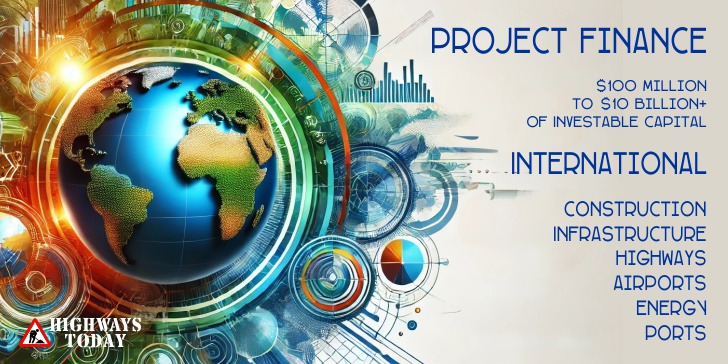Guyana’s Construction Boom opens up Opportunities for the Road Ahead
Guyana’s construction industry is on the rise, riding a wave of economic growth that’s reshaping the country’s landscape. From bustling urban centres to remote hinterlands, the sector is booming with investment pouring in, driven by the government’s ambitious infrastructure projects, the expanding oil and gas sector, and growing foreign interest.
But with opportunities come challenges, and the road ahead is not without its bumps. This article delves into the drivers of Guyana’s construction boom, the hurdles the industry faces, and the promising future that lies ahead.
The Rise of Guyana’s Construction Sector
Guyana’s construction industry is experiencing a renaissance. Fuelled by the country’s rapid economic growth, the sector is witnessing unprecedented levels of activity. According to recent reports, the industry grew by nearly 20% last year, with projections suggesting even more robust growth in the coming years. This boom is largely tied to Guyana’s emergence as a major oil producer, which has injected billions into the economy, creating a ripple effect across various sectors, including construction.
Infrastructure development is at the heart of this transformation. Major projects, such as new highways, bridges, and ports, are in the pipeline, aimed at improving connectivity and supporting the burgeoning oil industry. In addition, there’s a growing demand for commercial and residential properties, driven by an influx of expatriates and a rising middle class. “We’re seeing a construction boom like never before,” says John Mendes, a leading construction consultant in Georgetown. “The opportunities are vast, but so are the challenges.”
Oil, Investment, and Urbanisation
Guyana’s newfound oil wealth is a major catalyst for the construction boom. Since the discovery of vast offshore oil reserves, the country has been attracting significant foreign direct investment, much of which is being funnelled into infrastructure projects. This surge in investment is not only modernising Guyana’s cities but also creating a surge in job opportunities within the construction sector.
However, it’s not just oil driving the boom. Urbanisation is playing a crucial role as well. Georgetown, the capital, is rapidly expanding, with new commercial hubs, residential complexes, and modern amenities popping up across the city. The government’s vision of transforming Guyana into a regional logistics and business hub is also spurring investment in infrastructure, from new airports to deep-water harbours. These developments are expected to reduce transportation costs, improve trade logistics, and attract even more investment.
A Thriving Market for Investors
The construction boom presents lucrative opportunities for investors, developers, and construction firms. The demand for skilled labour, modern construction techniques, and high-quality building materials is higher than ever, opening doors for international companies looking to tap into this vibrant market.
“Guyana is a land of opportunity for those willing to invest in the future,” notes Susan Ali, CEO of a leading real estate firm in Guyana. “From commercial real estate to public infrastructure, there’s a lot of ground to cover.”
Several large-scale projects are currently underway, including the construction of a new bridge over the Demerara River, upgrades to the Cheddi Jagan International Airport, and the establishment of a new oil and gas processing facility. The government has also announced plans to invest heavily in renewable energy infrastructure, which will further boost construction activities in the coming years. For construction companies, this is a golden opportunity to establish a foothold in one of the fastest-growing economies in the Caribbean.
Key Opportunities in Guyana’s Construction Sector
- Commercial and Residential Development: High demand for offices, hotels, and housing complexes driven by economic growth.
- Infrastructure Projects: Bridges, roads, ports, and energy facilities are in high demand.
- Public Sector Investment: Significant government spending on public works projects and urban development.
- Renewable Energy: Growing focus on sustainable construction and green building techniques.
Challenges in the Construction Boom
Despite the promising outlook, the construction sector in Guyana faces several challenges that could hinder its growth if not addressed. One of the most pressing issues is the shortage of skilled labour. While the demand for construction workers has skyrocketed, the local workforce often lacks the specialised skills needed for large-scale projects. This gap has led to increased reliance on foreign labour, which raises concerns about local job creation and skill development.
Regulatory challenges also pose significant hurdles. The rapid pace of development has sometimes outstripped the capacity of regulatory bodies to keep up, leading to delays in project approvals and concerns about the quality of construction. Corruption and bureaucratic red tape remain issues, as do inconsistencies in enforcement of building codes and standards. Investors often face a labyrinth of paperwork and slow approval processes that can stall even the most well-planned projects.
Moreover, sustainability is becoming an increasingly important consideration in Guyana’s construction sector. As the country races to build, concerns about environmental impact are growing. Balancing rapid development with sustainable practices is a challenge that both the government and private sector must tackle head-on.
Key Challenges Facing the Industry
- Skilled Labour Shortage: A gap in training and expertise, particularly for specialised construction roles.
- Regulatory Delays: Bureaucracy and inconsistent enforcement of building regulations.
- Environmental Concerns: Balancing development with sustainability and minimising environmental impact.
- Inflation and Material Costs: Rising costs of materials due to global supply chain disruptions and local demand.
Building a Sustainable Future
Guyana’s construction boom shows no signs of slowing down. With billions of dollars of investment lined up, the sector is poised to continue its upward trajectory. However, to sustain this growth, addressing the challenges will be critical. The government has already started taking steps to streamline regulatory processes, improve workforce training, and promote sustainable construction practices. These initiatives are vital for ensuring that the construction industry can keep pace with the country’s broader economic ambitions.
Looking ahead, there’s a growing emphasis on integrating smart technologies and sustainable building materials into new projects. Guyana has a unique opportunity to leapfrog into the future of construction by adopting green building standards, energy-efficient designs, and innovative construction methods. For investors and industry players, staying ahead of these trends will be key to capitalising on Guyana’s construction boom.
The Gateway to Opportunities
As Guyana solidifies its status as a rising economic powerhouse, the International Business Conference – Guyana (IBC) 2024 will be a pivotal event under the theme “Guyana: The Gateway to Opportunities.” Scheduled for 15 – 17 October 2024 in Georgetown, this private sector-led, three-day B2B conference will bring together over 100 key local and international stakeholders, including government representatives, business leaders, investors, and policy makers. The IBC will serve as an essential platform for exchanging views on investment opportunities, showcasing best practices, and forging strategic partnerships across Guyana’s key sectors.
The conference will feature a series of critical discussions on trade and investment prospects, covering a broad spectrum of themes like financing, incentives, taxation, local content, and governance. Informative sessions will dive into vital sectors such as manufacturing, agriculture, energy, technology, and infrastructure. Day 1 will kick off with presidential addresses and an exploration of Guyana’s manufacturing future, while Day 2 will highlight key sectors and regulatory landscapes, and Day 3 will split into focused streams on manufacturing and supporting infrastructure, covering everything from accessing capital and enhancing supply chains to the future of technology and mining.
By bringing together thought leaders and industry experts, the IBC 2024 aims to unlock the full potential of Guyana’s rapidly growing economy. This conference represents not just an opportunity to learn and network but also a chance to actively shape the future of the region through collaboration and strategic investment. For those looking to engage with Guyana’s ongoing growth surge, the International Business Conference is an unmissable gateway to new opportunities.
A Bright Future for Guyana’s Construction Industry
The future of Guyana’s construction industry looks bright. With a thriving economy, robust investment, and a government committed to modernising infrastructure, the sector is well-positioned for continued growth. However, navigating the challenges will require a concerted effort from all stakeholders. By focusing on workforce development, regulatory reform, and sustainable practices, Guyana can ensure that its construction boom leads to long-term prosperity.
For investors and construction professionals, now is the time to seize the opportunities that Guyana’s dynamic market presents. As the country builds its future, the construction sector will undoubtedly play a central role in shaping the nation’s path to prosperity.





















